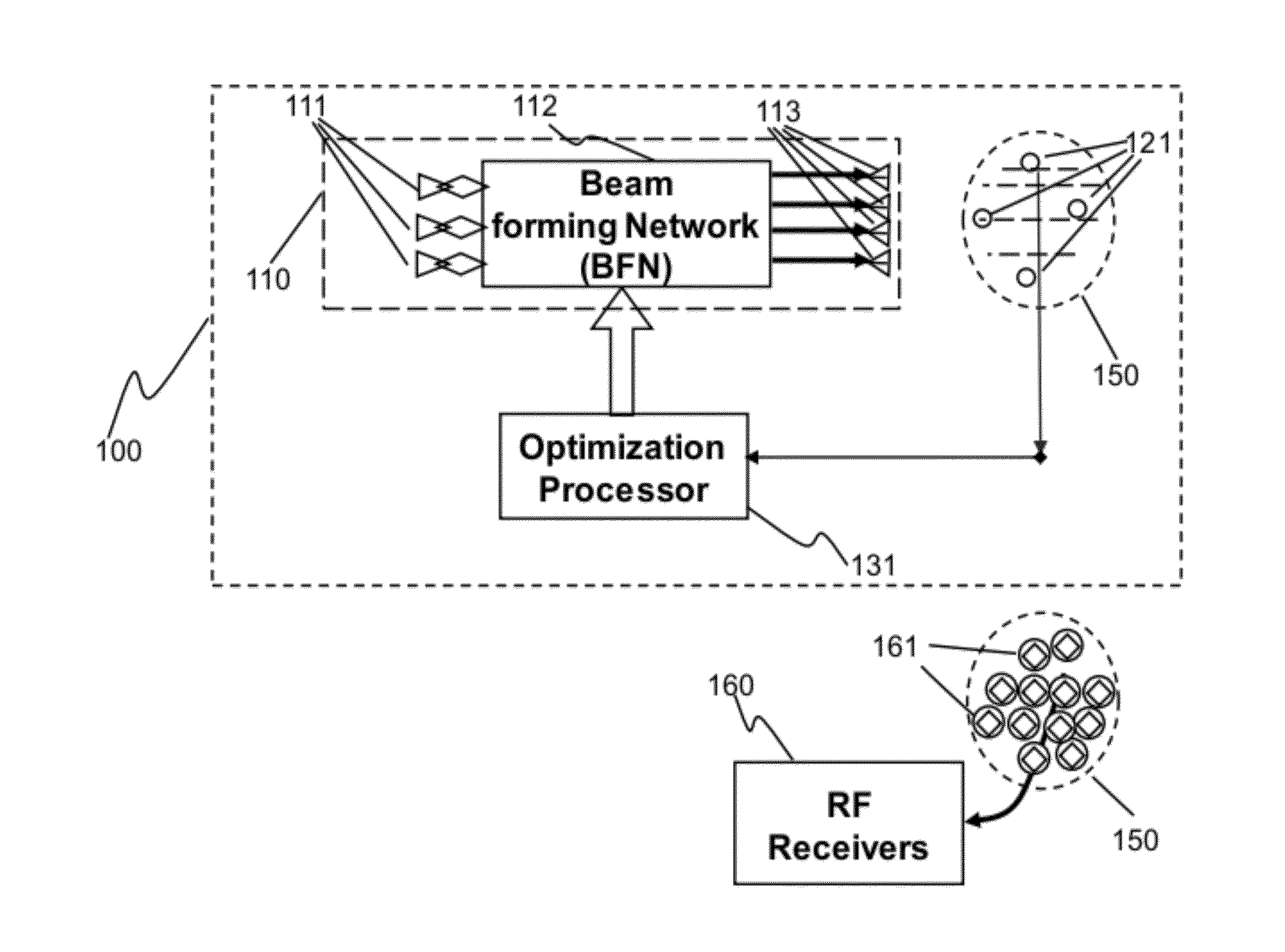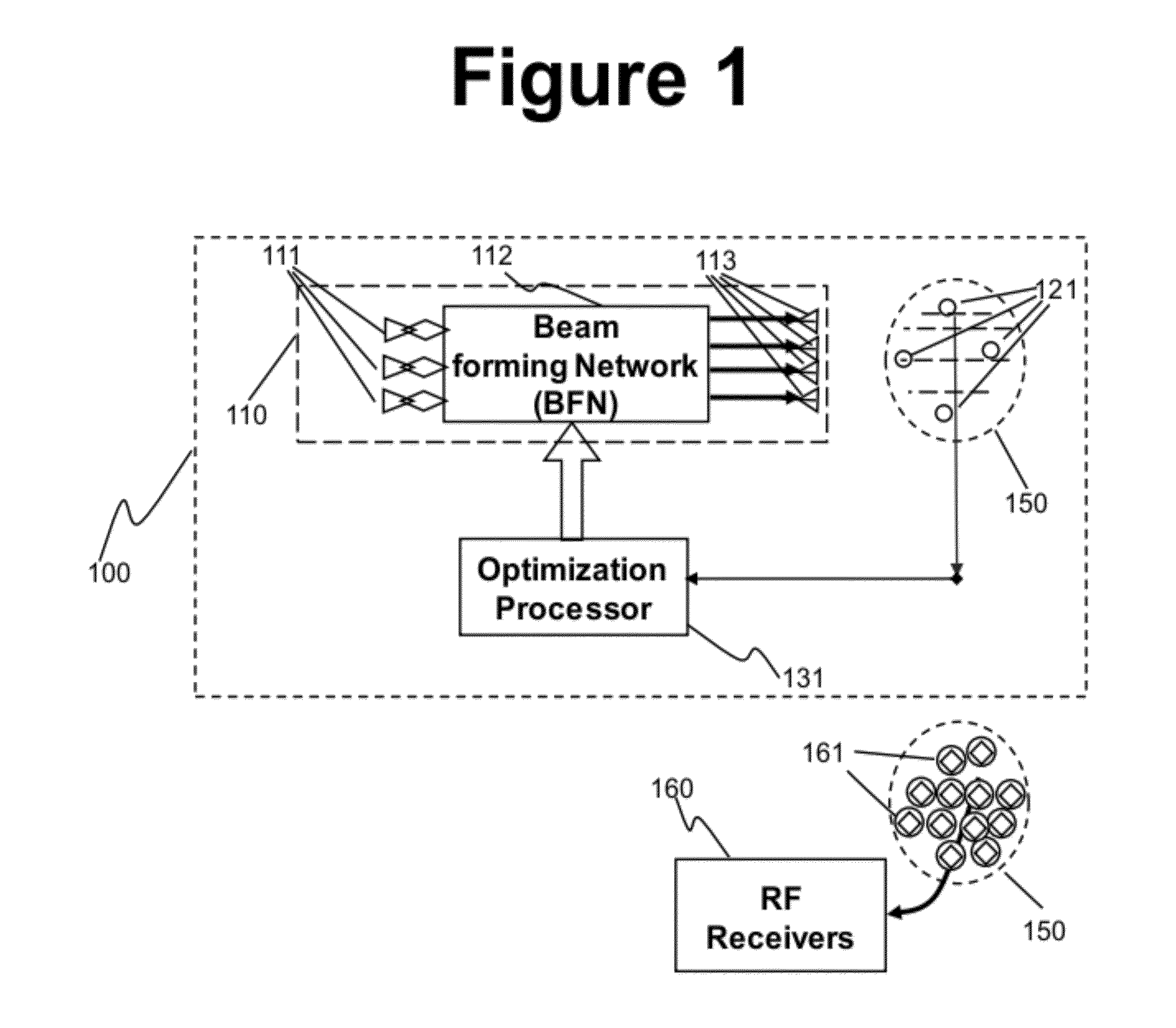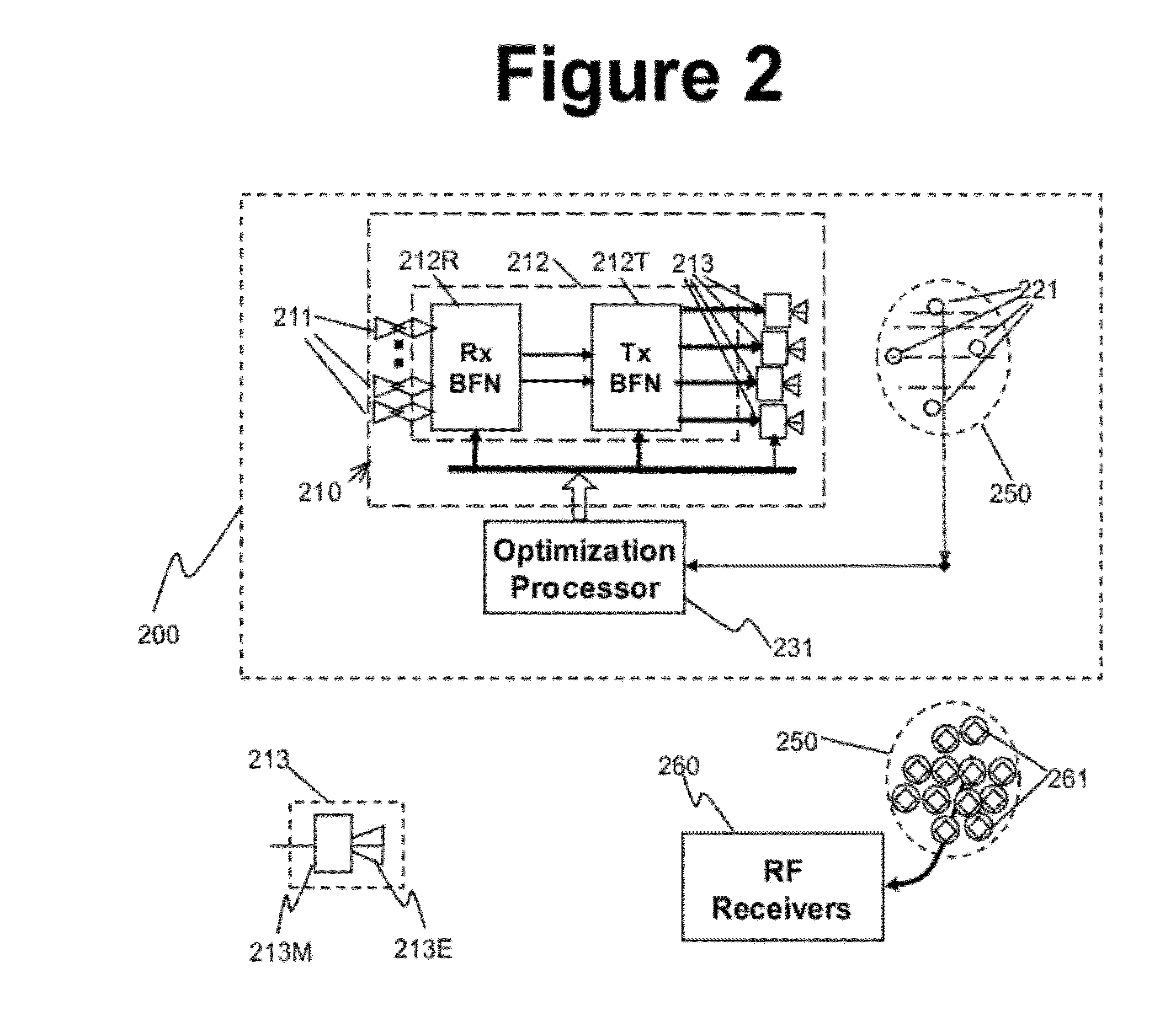Apparatus and Method of Generating Quiet Zone by Cancellation-Through-Injection Techniques
- Summary
- Abstract
- Description
- Claims
- Application Information
AI Technical Summary
Benefits of technology
Problems solved by technology
Method used
Image
Examples
Embodiment Construction
[0040]The proposed quiet zone generation technique features injection of interferences at low power levels for cancellations. The interference mitigation technique consists of an auxiliary injection array with iterative processing to dynamically maintain a quiet zone over limited areas over which Rx antenna apertures operating in full duplex while nearby Tx apertures with strong RF leakage are in operation.
[0041]In order to provide a working frame of reference, a glossary has been provided to define some terms used in the description and claims as a central resource for the reader. The glossary is intended to provide the reader with a general understanding of various terms as they are used in this disclosure, and is not intended to limit the scope of these terms. Rather, the scope of the terms is intended to be construed with reference to this disclosure as a whole and with respect to the claims below. Next, an overview is presented to provide a general understanding of the scope an...
PUM
 Login to View More
Login to View More Abstract
Description
Claims
Application Information
 Login to View More
Login to View More - R&D
- Intellectual Property
- Life Sciences
- Materials
- Tech Scout
- Unparalleled Data Quality
- Higher Quality Content
- 60% Fewer Hallucinations
Browse by: Latest US Patents, China's latest patents, Technical Efficacy Thesaurus, Application Domain, Technology Topic, Popular Technical Reports.
© 2025 PatSnap. All rights reserved.Legal|Privacy policy|Modern Slavery Act Transparency Statement|Sitemap|About US| Contact US: help@patsnap.com



